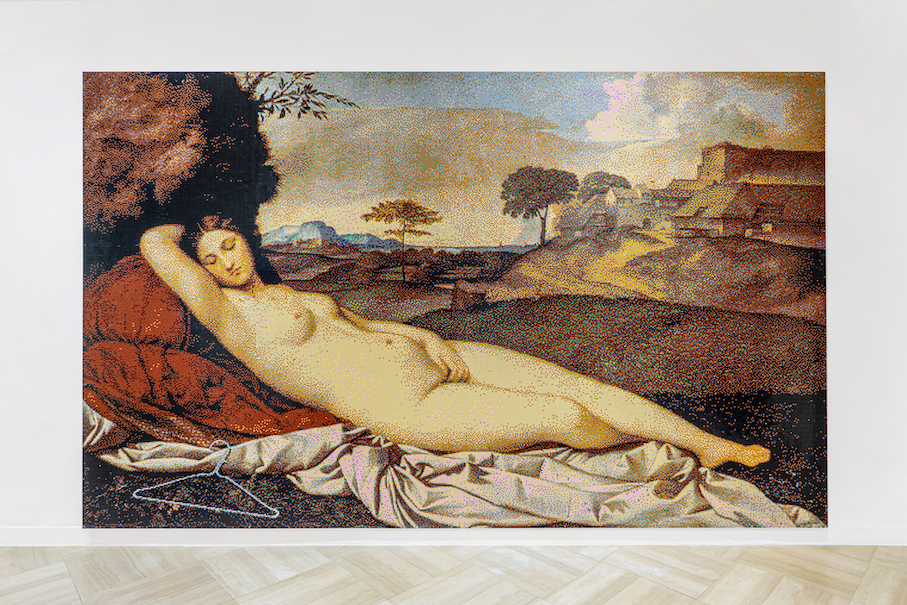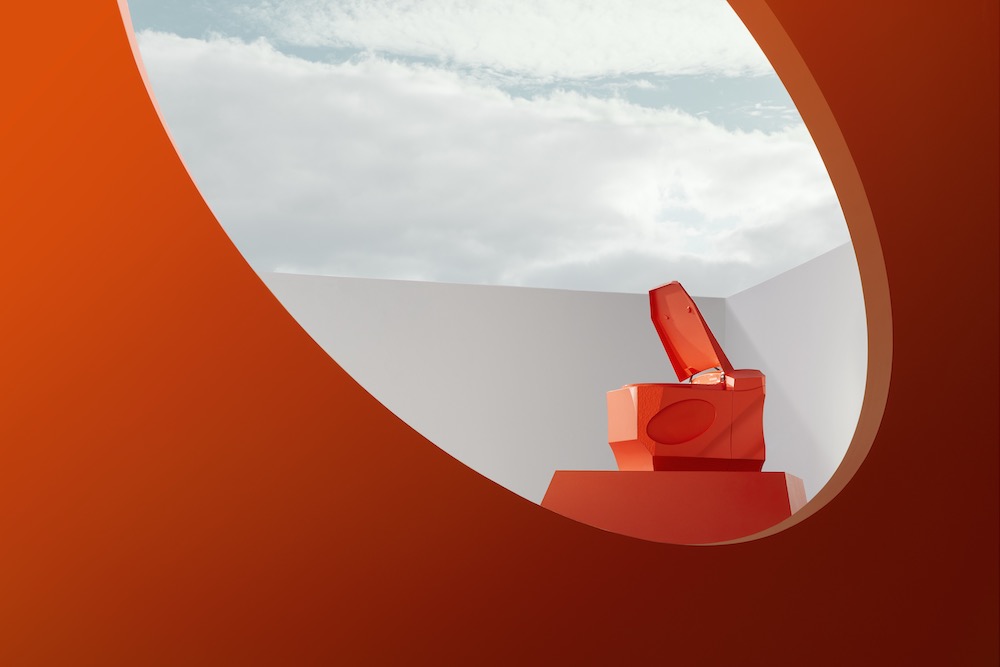Last month, Whitewall and Lexus hosted an installment of the collaborative “Lexus Art Series”—a continued talk series about art and innovation, and its impact on today’s culture. The panel discussion was held at The New York EDITION entitled “How Millennials Are Disrupting The Art World.” Moderated by independent curator Roya Sachs, the discussion featured wise words from some of the art world’s hottest rising stars: artist Chloe Wise; special project manager of Performa, Job Piston; specialist at Christie’s, Vivian Brodie; and independent curator and director of Times Square Space, Tiffany Zabludowicz.
Special attendees gathered over coffee, enjoyed breakfast bites, waved through the Whitewall spring 2018 issue on Meural digital canvases, and flipped through the new Whitewaller New York before listening in on the discussion and its many points on how the younger generation is shaping the art world—from visibility with social media to being generous. The talk streamed live on both Facebook and Instagram, but for those who missed it, Whitewall provides insight from the talk below.
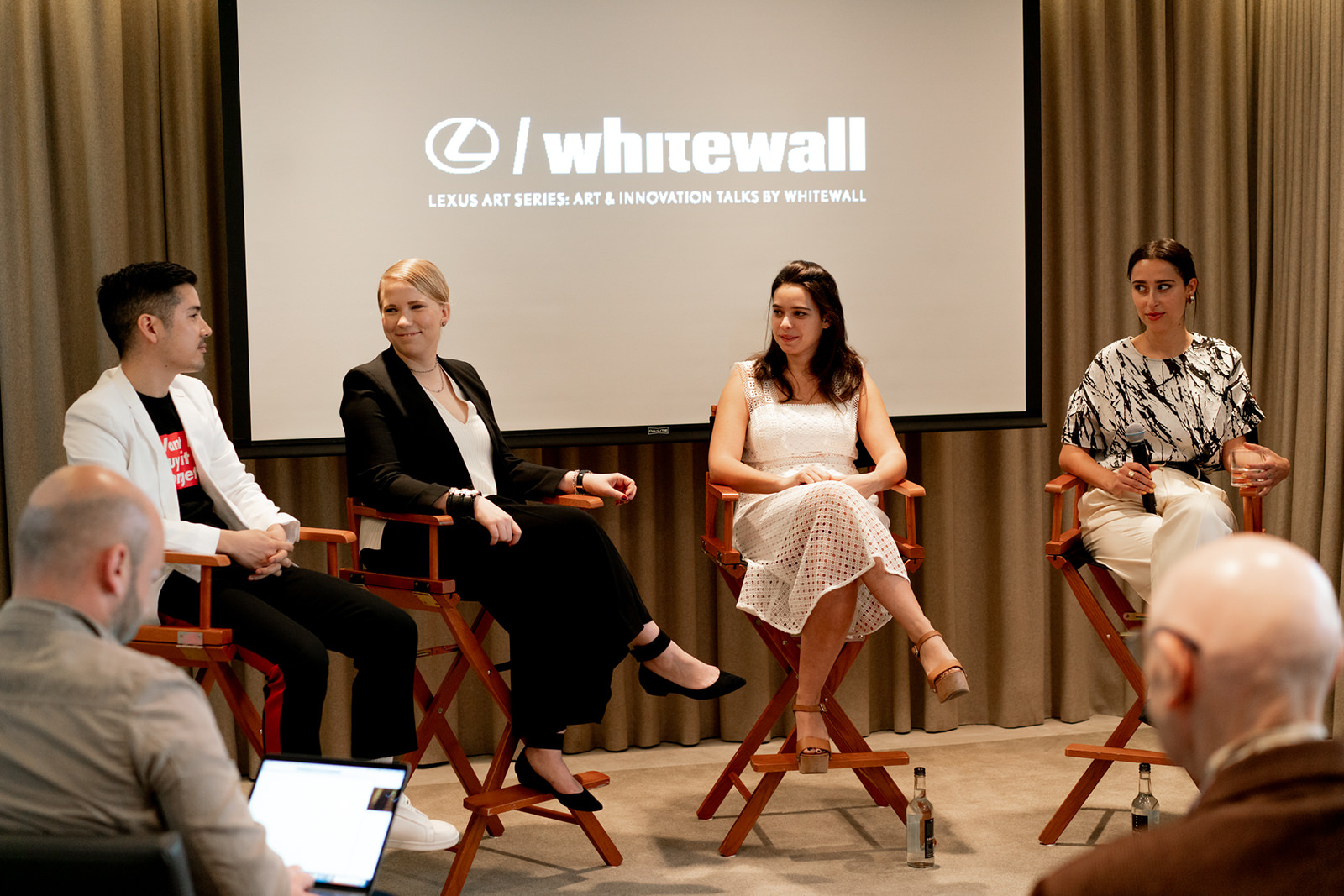
“Lexus Art Series: How Millennials Are Disrupting The Art World,” hosted by Lexus and Whitewall on May 2, 2018 at The New York EDITION.
ROYA SACHS: I would love to introduce our beautiful millennial panelists. We have Chloe Wise, a fantastic Canadian multidisciplinary artist who does paintings, sculpture, installation, video… She reevaluates classical notions of orchestra in a contemporary environment and she works very closely with represented Almine Rech and she has a show opening very soon at gallery May 25, Galerie Sébastien Bertrand in Geneva, Switzerland. Next, we have the dashing Tiffany Zabludowicz who is an independent curator also director of Time Square Space and a collector. Then we have the beautiful Vivian Brodie who is post-war and contemporary art specialist at Christie’s and also a previous specialist at Paddle8. And last but not least, Job Piston, who is a special project manager at Performa. He’s been there for six years now and has done four biennials, so he’s a real natural I would say.
Millennials…where do we begin? I researched the definition of a millennial, and I figured out that there was a lot of confusion, but also a lot of clarity. I’m going to read just a few definitions, so you can all get a little bit of understanding of what we have to go through on day-to-day basis.
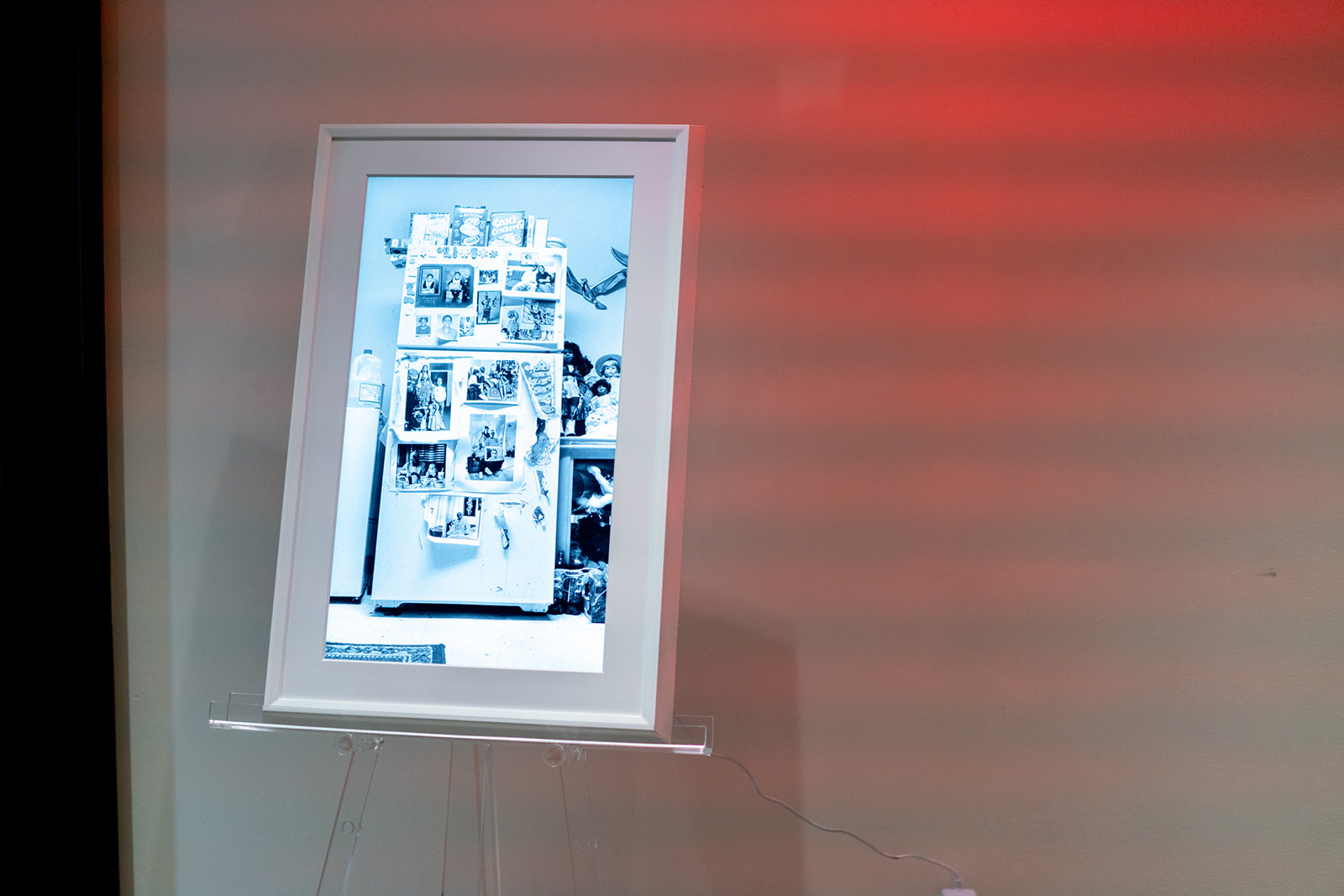
Meural canvases at “Lexus Art Series: How Millennials Are Disrupting The Art World,” hosted by Lexus and Whitewall on May 2, 2018 at The New York EDITION.
So, the actual definition in relative times is a person born between 1980 and 2001, generation Y, in early 21st century. Other definitions, from the more cruel people of the Internet, tell us it’s often confused for being tech-savvy and capable of life skills, but many of us are more often incapable with life skills than early generations are commonly more adapt to, such as changing car tires, filing paperwork, cooking, and reading usage agreements and contracts on websites and smartphones. Finally, no money, no house, just avocado. So, millennials are overtaking the world now, and in 2019, we will actually be a majority in America. So, from that starting point, I would like to hear from you guys. What do you think of a millennial? How do you define that in your own terms?
CHLOE WISE: I think being generous. My definition would be that we are digital natives in the sense that we were brought up and socialized with access to an increasingly abundant amount of technology. It doesn’t mean we are good at it, but we certainly have been zooming and pinching and swiping and using computers since we were babies, which I think color is the way we interact with and reference art in our day to day interactions…
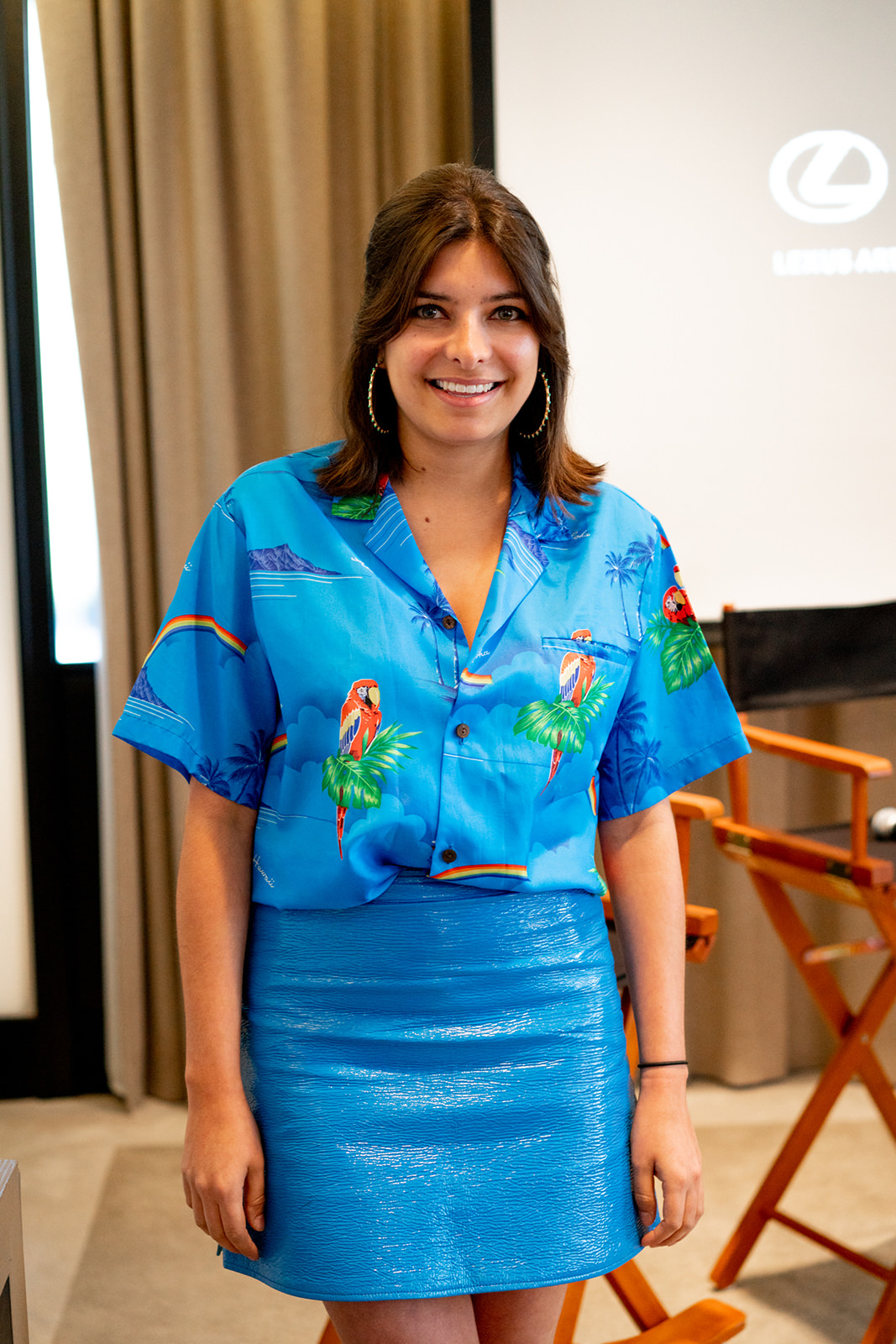
Roya Sachs at “Lexus Art Series: How Millennials Are Disrupting The Art World,” hosted by Lexus and Whitewall on May 2, 2018 at The New York EDITION.
TIFFANY ZABLUDOWICZ: I think luckily for art we are a more image-based generation, which is amazing because people are trying to look at pictures. We also have so much access to information, which is probably negative sometimes.VIVIAN BRODIE: I definitely agree with Chloe that we’re digital natives. We are constantly using the Internet toward our benefit and detriment—researching, Googling, Instagramming.
JOB PISTON: I think coming from the art perspective, we are very interdisciplinary, but that also relates to how non-hierarchical we are. I was going to say in terms of social media, but also the way we think; we think about art the same way. We think about fashion the same way, we think about consumerism the same way. We think about politics the same way—in that what we believe in is our point of view. We often think across the line in a much more comfortable way than other people do.
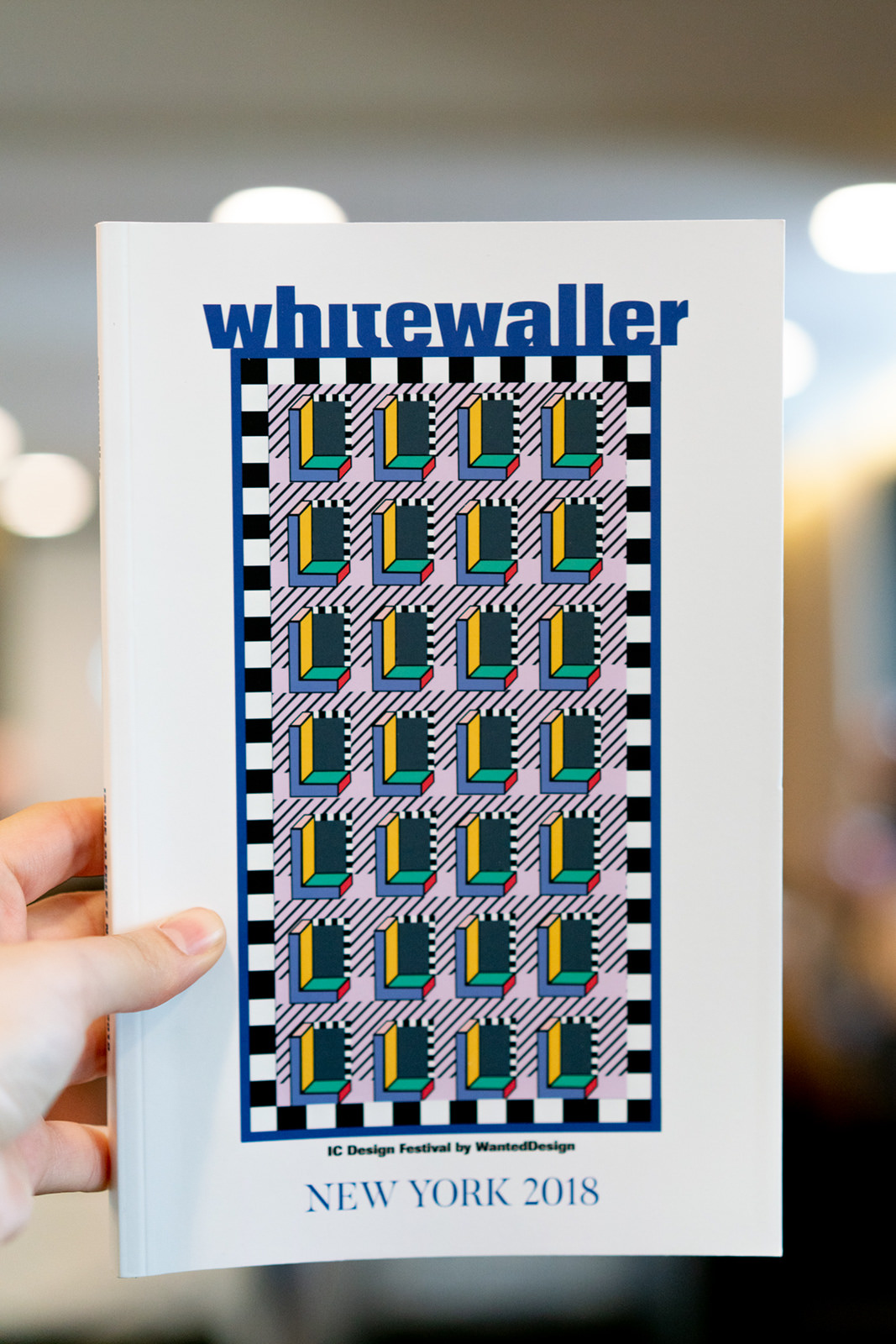
“Lexus Art Series: How Millennials Are Disrupting The Art World,” hosted by Lexus and Whitewall on May 2, 2018 at The New York EDITION.
ROYA SACHS: Totally. A clean thread here is that it’s a new type of communicator. The way in which we interact with society—with our friends, with people around us—has really shifted.
I would love to go back to Chloe now. How has social media impacted the way you work professionally? Of course, in your work you take inspiration from that, and it’s very much this societal critique which really focuses on contemporary societies and their obsession with selfies, and because of all this information and transparency.

“Lexus Art Series: How Millennials Are Disrupting The Art World,” hosted by Lexus and Whitewall on May 2, 2018 at The New York EDITION.
CHLOE WISE: I wouldn’t know how it would have been without that because I’m 27. So, when I began my career after school, even during school, I had no choice in the matter of my sharing. I was always sharing, and I continued to share works that I am creating from their beginning stages, to their middle stages, to the finished…
I think there is a fluidity in terms of sharing. I can’t even speak to how it would have been without that because previous models of how artists and emerging artists create unfolded probably by relying on a gallerist; relying on these systems that are already in play. The nature of using social media, for me and other artists, is just like that system, in the sense that we are speaking directly to the audience, consumer, viewer, collectors, buyers. So, I think it would really hard for me to say how it would be without it, but I’m quite pleased to be able to share in such a way that is so democratic.
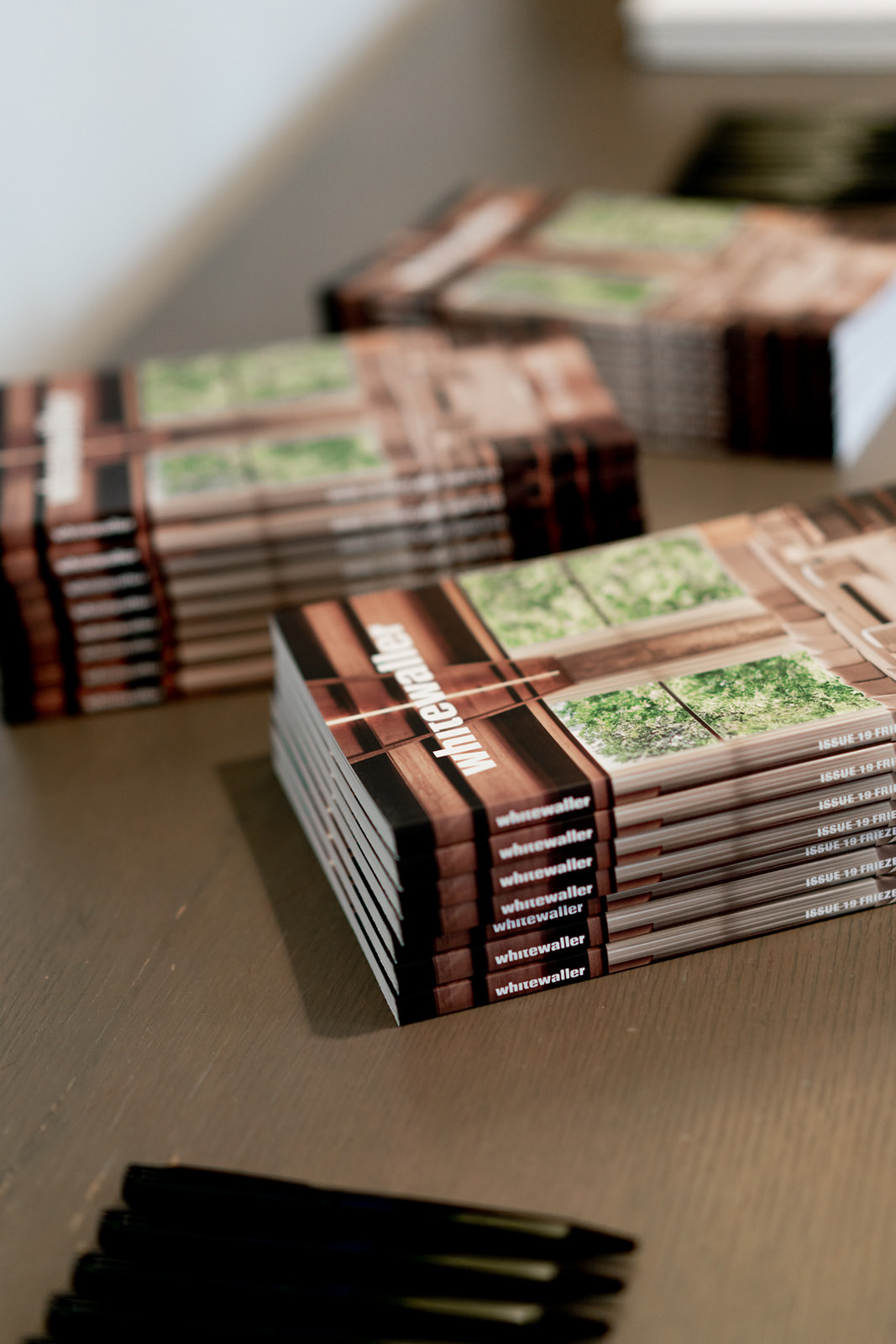
“Lexus Art Series: How Millennials Are Disrupting The Art World,” hosted by Lexus and Whitewall on May 2, 2018 at The New York EDITION.
I don’t know if you are aware of my series—this is one of my “early” works, which was like 3 years ago (MILENNIAL!)—but it was a series in which I did an oil painting; a self-portrait per day. Then I took a photo of myself, kind of standing next to the painting. Quite mock-y. I think that the immediacy building up, and just how quickly I was creating an audience (something that takes much longer than just one day, and that is not shared that evening), and how an artist creates alone, sitting, and it’s whole process…it’s so much more precious.
As a millennial, things are much more precious. We create things and share them and relive the next thing with its immediacy. Much likely we just scroll through things. Now it’s more of a flow-through scrolling movement. That was also a feeling of ideas of narcissism—not because I’m trying to work through my own narcissism, but rather that I think what I love about non-millennials is that they are obsessed with policing or trying to understand our millennial narcissism—especially as young women. At that time, Jerry Saltz said that selfie was the word of the year, and I was like “I’m so sick of everyone talking about this!” If we don’t document ourselves, we feel like we don’t exist for another reason. There’s a sexist policing of that, where it’s like “Oh, if you take selfies as female artist, you’re a selfie artist.” Three years ago when I was doing this work—a series in which I did an self-portrait oil painting and a selfie per day, which is something that takes much longer than just one day—I was sort of shrugging off these ideas of millennial narcissism as this negative thing, when in reality, it’s something that’s existed… this self-mythologizing artist as a trope is not a new way of looking at self-portraiture.
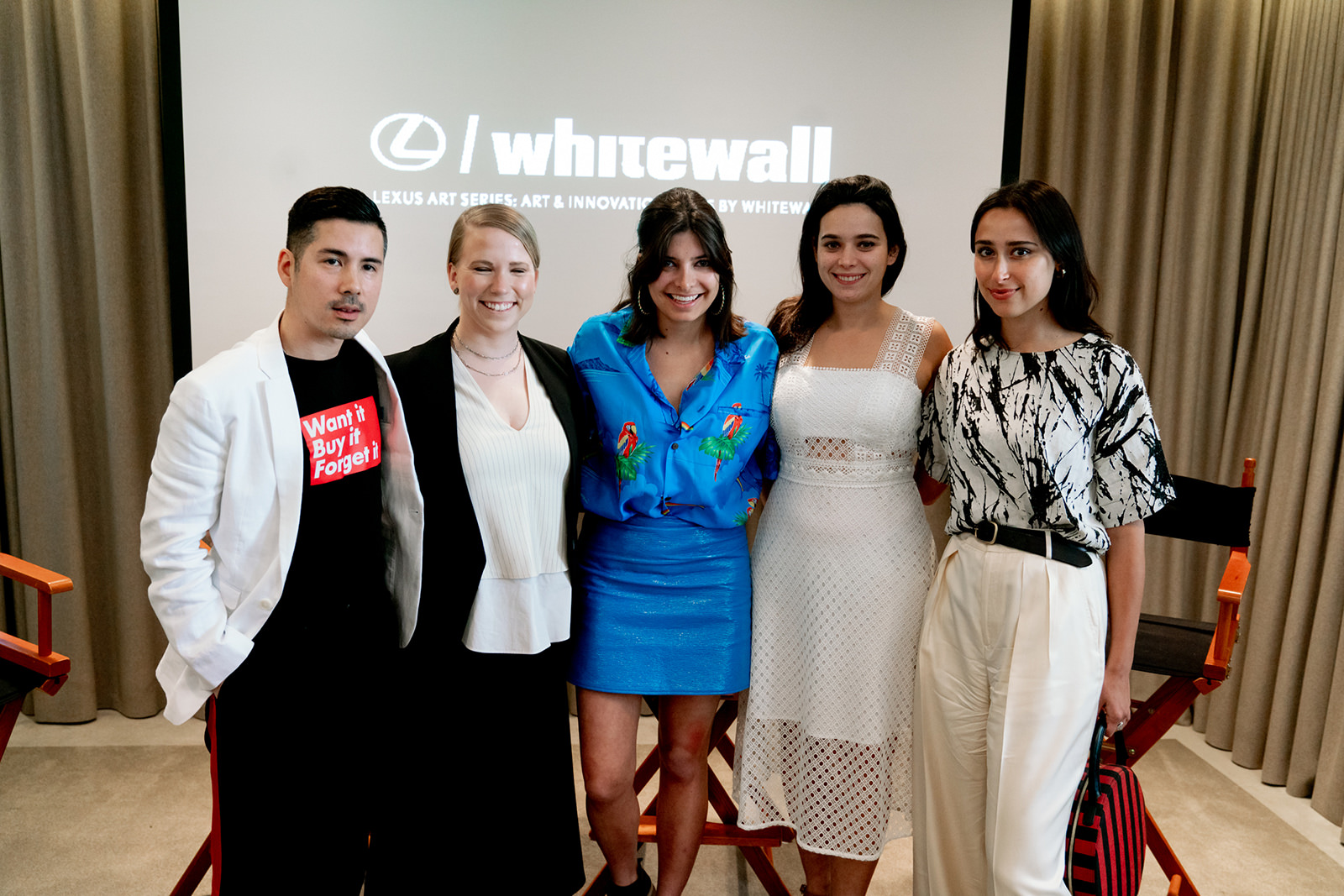
“Lexus Art Series: How Millennials Are Disrupting The Art World,” hosted by Lexus and Whitewall on May 2, 2018 at The New York EDITION.
ROYA SACHS: Because you are exposed, it’s much more mass-produced now just because we have so much more access to it. I would like to pass the next question on to Job. How has social media impacted how you work professionally? We always talk about the importance of social media with these very specific artists and talk about performance and how that’s really changing. Perhaps you could maybe talk about your project “Performa 15” with Tania Bruguera, referencing how social media shaped it?
JOB PISTON: It’s been exciting to give artists the opportunity to think about social media as a platform to express their ideas, or to think about it as a time-based medium. With Tania, we invited her to do an Instagram takeover, but what she ended up wanting to do was create a space of anonymity—because social media is so much defined by your handle, your selfie, your face, your identity. She was like, “How can we be anonymous on the internet?” What she end up doing was putting her password to @taniabruguera into the bio lin, thereby opening up to the entire Internet to be able to log on and be Tania Bruguera. It wasn’t about being Tania Bruguera but it was about more about this idea of, which Tania often does, using the world as artists—as a vessel for other peoples’ voices and ideas.
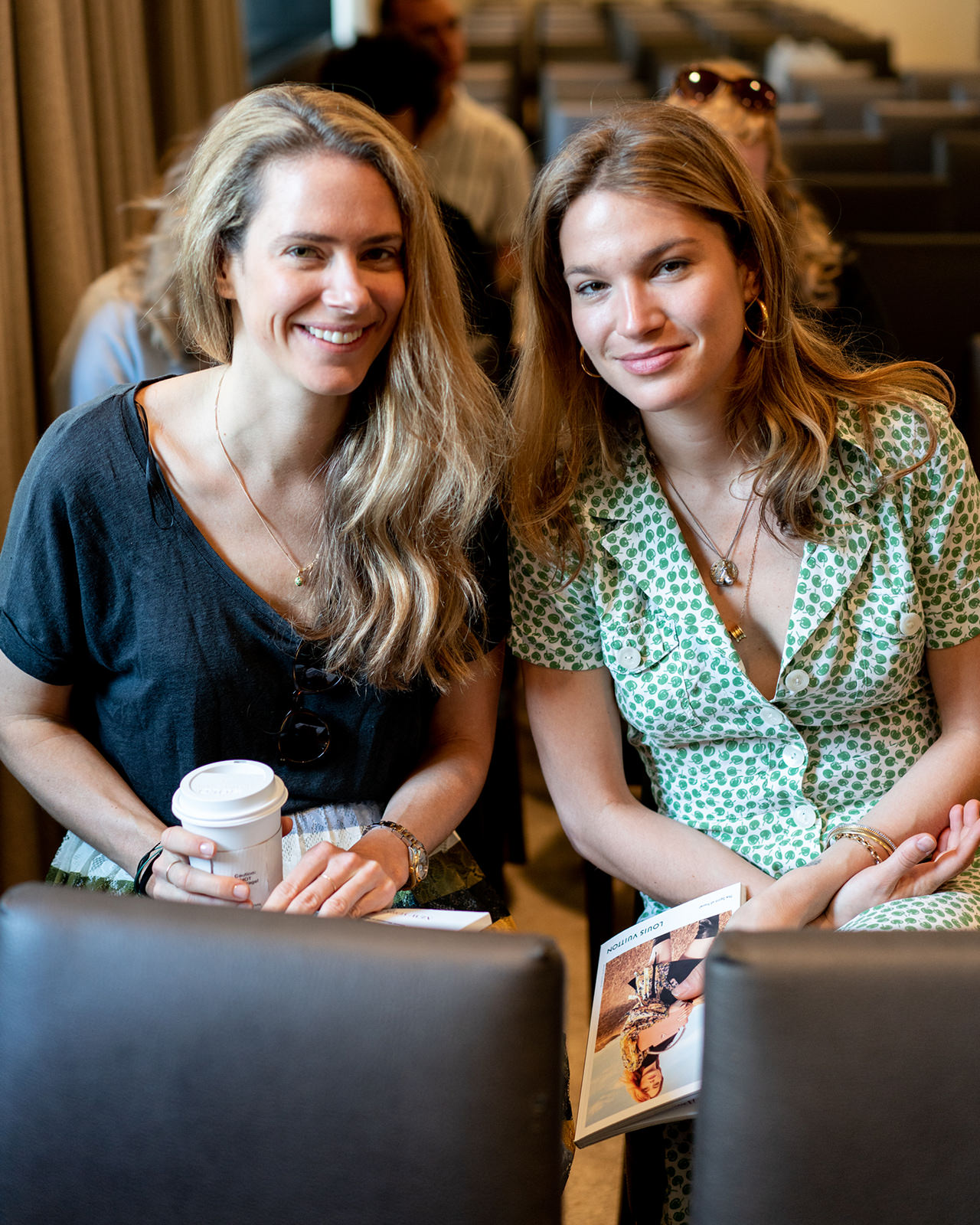
“Lexus Art Series: How Millennials Are Disrupting The Art World,” hosted by Lexus and Whitewall on May 2, 2018 at The New York EDITION.
We also started this hashtag called #instacitizen and she asked people on the Internet to name a time when they’ve have had to self-censor themselves. So, she invited the general public to post a picture and then a caption an answer. It was very interesting to see what people would do with it. I became obsessed watching the feed because I think it allowed people to be a little more honest since they didn’t have their name attached to what they had to say. It brings about perfection, a need for perfection, and posting your best life on the internet. Through this project, she was subverting the idea of being perfect where you could actually say: This happened to me when I was younger.
A lot of her work was also questions like, “Answer a time when you had to self-censor yourself around love, around your immigration status, about your sexuality, about your identity.” What intrigues me the most is giving this platform over to an artist and see how they will interpret it, how they will make us of the platform, and how will they subvert what’s going on with it. It’s really exciting.
ROYA SACHS: Tiffany, as a collector, do you think social media and the Internet are necessary tools today? How important is an online presence?
TIFFANY ZABLUDOWICZ: I love social media for multiple reasons. One is, for example, with Chloe’s show in Geneva. I won’t be able to come as I’ll be stuck in New York, but I know you’re going to post it and then I’ll literally see who’s at the opening, I’ll see the works. And through Instagram, you get a better view than you would from an installation show, for example, because you can really see it almost in real life.
Also, you often post pictures of you painting, and in the studio, and so I get an insight into your daily practice. I think that sharing is very generous and also very interesting, because you usually don’t get access to it apart from the occasional studio visit. The other thing I use it for is for promotion—promotion of events or artists. As a promotion tool, it’s incredible. I just opened a show at Time Square Space by Signe Pierce, who is an artist that has approximately 15,000 followers on Instagram, and someone called @fomofeed Instagrammed it. We have had so many visitors who have just heard about it on Instagram, and that for me is incredible because they’re outside of the art world.
ROYA SACHS: And as a collector, are you doing a lot of research on artists online? Is that very important to your practice?
TIFFANY ZABLUDOWICZ: Yeah, I’m constantly going on Instagram binges and also YouTube sometimes. You just go on one hashtag and end up on another hashtag and another artist and then you’re like, “Oh that looks good,” and then you click another one and then maybe twenty clicks down the line you find something really great, and then you DM the artist and ask for a studio visit and then you find someone new that’s amazing and then you’re in communication with them and it’s real and it’s tangible. So, it goes from online to becoming a tangible connection with a really good artist.
ROYA SACHS: It’s really changing the way in which artists are able to expose themselves and for you to discover new people and have that direct contact with collectors and with audience that could be interested. I think that really pleads into the next chapter that I would love to talk about which is the idea that millennials are the new type of collectors. What does this new type of collector look like? Of course, because of the internet and social media now, the online market has of course changed the way the art world has been facilitated. As of right now, it only makes up 10% of the world art market, which I think is really interesting. A recent report from Art Basel and UBS also stated that an average individual spent around $3-5,000 on online purchases. I think that’s really interesting because it’s showing that it is a younger audience, yet it’s not growing as rapidly as we would expect it. Vivian, I think to start this off: How has online purchases really changed the classic auction house model?
VIVIAN BRODIE: So, I run our mid-season of online sales at Christie’s. I think that only 10% of the purchases happening online is a very interesting statistic because that is changing every month. Christie’s sees over a hundred new buyers for every online sale. If the art world is going to continue with young people, they’re really starting at the online price point, which, you’re right, is at around $20,000 dollars. So if a hundred new buyers come in every time we do an online sale, it’s really unprecedented in terms of our auctions. We don’t see that for day sales and we absolutely do not see that for evening sales.
So, this is a really good opportunity for Christie’s to engage in new audience, and it’s a great way for our staff to meet new people. They come in online and then we build personal relationships with them through their purchases and what they’re looking at. I think that not only are these millennial purchasers, they’re really purchases from all around the world. I think the online platform gives people a little bit of a less intimidating experience. I think that Christie’s, for an outsider, is an extremely intimidating environment. I remember the first time I went there I was terrified, and I’ve been going there every day since for a long time. I think online allows people to buy a different way and to engage in the art without feeling like they have to buy a $400 million Leonardo Da Vinci painting in an evening sale. That’s very exciting for us and we see the future of the art market through online sales for sure. And that market is constantly growing.
One would imagine that that number would go down over time, but we’ve seen that number only increase over the past two years, which is very exciting. I also think Christies has a lot of work to do with their e-commerce platform. We have an app, we have online auctions, but I do think we could be doing more to engage with people, which is a lot on what I’m working on. I think there is some interesting way that our millennial collectors that buy online engage with us—which is that our app doesn’t work that well all the time. I usually get screenshots of our app, either through WhatsApp or DMs, or I get tagged in a Christie’s Instagram post from a client that wants to hear more about it. So usually I have to follow up with a phone call being like, “Hey you tagged me in this diamond ring…?”
JOB PISTON: Can I ask a question? A two-part question. One: Do you see a relationship between people who see the work online and then ask to come in to see the piece? One issue I have with looking at art on the Internet is scale. So, you look at something like this and you’re betting on it, but it actually looks like this. This is a challenge I always think about that is hilarious about looking at art on the Internet.
My second question is about taste, which might be what you are touching on, but it’s about what looks photogenic. How do people buy? What happens to subtlety? What happens to textural capacity when you are looking, buying, and experiencing art online?
VIVIAN BRODIE: In response to the first question, I have a very anti-millennial answer, unfortunately. I also have a huge problem with scale. I grew up between Europe and New York, so I don’t really understand centimeters or inches at all. My first boss actually gave me a very small pocket size tape measure and said that when a collector asks you how big it is, go to the bathroom and figure it out and then come back out and make a decision. So, I think scales are always a problem. Online we combat this in more creative ways. We have installation shops that are above a couch or next to a dog or a cat. And I think scales are the biggest thing we combat.
In terms of the second part of your question, which is the photography, I have yet to see an artwork that doesn’t look better in person, to be honest. I think all art collectors say that they never realized how big it was, but they will never say it looked better in the photo. People like seeing art in person better. You always get more surprises seeing the work in person. There is always something else to discover there. I think online is a nice introduction, but when that comes home or when you see that in person, you’re always going to find it better.
ROYA SACHS: How are millennials then really educating themselves? There is so much information, so I am interested in the way people educate themselves. Sometimes it’s Instagram or is it more that they want their first experience of an auction house or an art fair. And then they realize they really like this art historian more. Because there is so much information out there I was wondering how they are educating themselves?
VIVIAN BRODIE: I think in a lot of different channels. In terms of our social media presence, Christie’s has a broad band social media presence of what we are doing across all departments, which I think is very important. I work in Post-War and Contemporary Art. I am very focused and specialized in that. But art collectors, millennial or not, look at everything. Not only are they learning from us, but I am often times learning from my clients just as much. In addition to our larger social media presence, most specialists have their own Instagram account—their own kind of personality and taste that they drive. We get a lot of questions about that. I find collectors that are on Instagram, like Tiffany talked about, and they are reading about art. I get so many articles and podcasts sent to me. I think they are consuming media from every outlet, and sometimes outlets I have never heard of where I need to download something to also get that information. I think it’s really demographic.
ROYA SACHS: Thank you for that—it was enlightening. Now, Chloe, you have a very strong social media presence. How much in terms of this “middle man” is being taken out? Because you are represented by galleries, you work with galleries, you do exhibitions, yet you also have a very strong interaction with your audience directly… So, how much do you connect with new collectors through your different social media streams, or do you like to completely separate those two?
CHLOE WISE: Absolutely. There is definitely a lot of that—whether its collectors or galleries or other artists that I definitely communicate with and find a way to my work online. That is completely invaluable, and I am so happy about that. Because, like I said before, relying on this pre-existing system of how gallery and artist relationships work would be something that would have not resulted in so many connections and interesting interactions that I have had. I 100% respect and abide by any rules of the gallery system and I don’t disrespect that, and I am very thankful for the galleries that I work with, but they did find me online. And sometimes there are collectors that find my work online, and like Tiffany pointed out, there are people that post a lot of in process painting or the thought process that goes into something. So, I think there is a more personal connection to a work before it’s finished.
I think previously you would only see a work in the polished and finished product. In the context of a gallery, you don’t necessarily have this constant stream of studio visit, and as you said, it is not an elitist thing, but it is something that has never been this accessible. As you said, as well, work looks much better in person. I think the visceral, tangible experience, where you are connecting with the piece and you are seeing brushworks or scale or nuance, is a physical experience that you cannot think you achieved by seeing something on a tiny screen with the brightness down. That being said, it’s an added facet—the experience of stumbling upon something and finding it and connecting to it and sending it to someone directly and liking it…those are all added experiences to the consumption of work, but I would never say that it replaces it.
With my interactions with collectors and other artists, it’s an added benefit. It’s an extremely interesting way of communicating. But it does not necessarily replace the gallery system unless it should or has too. Because of circumventing this whole thing, if something should happen, I am at less risk of being completely left and screwed over. I don’t think the galleries would do that, I love them very much, but there is a fear when you are a young artist when you see the things that have happened to other artists, like inflation of prices and people being left with no career. So, there is a backup—this safety net of being like, “Well, the people I am interacting with—the millennial collectors, curators, writers, thinkers and other artists—we’re all in this together and we can work around the baby boomers who might leave us hanging like they left the environment.” There is a sort of safety and connection that is really invaluable.
ROYA SACHS: I would like to pass this unto Job now. Because we see so much online, how important, is it to see a show, a performance, a work in person? Is there more of a need or a desire for that collective community?
JOB PISTON: The best way to activate your senses is to be there right in front of the work. I think the most powerful work pulls on your heart and your mind and I think something about spending a lot of time on your screen, on your phone or on your desk, is that there is a natural sense of detachment. It is something you do in solitude. There is a craving to be in front of an art work and also living inside an artist’s ideas. There is something really exciting to me when you are pulled away from your device, and you can shut the door and be inside someone’s work, really focused with no phone for 45 minutes, an hour, 3 hours, 6 hours (and with Robert Willson). [Laughs] There is nothing like that kind of engagement and living inside an artist’s idea. What does this idea sound like? What does it look like? How does it feel? How does it move?
And that’s especially true with something we work on at Performa, which is performance… I always say that performance, and my other love, photography, is a very democratic medium. You can always watch another body and be able to walk away and say how you felt and what you saw. That is a great place to start learning and experiencing work. You as a viewer of artwork complete the work. It’s only half done when it’s on the wall or when it’s being performed. Your dialogue and thoughts with the community is what completes that work. That happens when we experience something collectively. I think social media is definitely a great tool, but the tool is that it brings you closer to really appreciating this collective experience.
ROYA SACHS: Tiffany, I would love for you to also touch on that. How does that impact the way in which you are installing a show, and trying to bring an audience in, as a curator? How are you taking them away from this instant gratification and really making them engage, interact, and then react, whether that is emotionally, physically, or mentally?
TIFFANY ZABLUDOWICZ: In person, obviously, is the most important. The best thing is when people see the work and actually connect with it. I love it when people can meet an artist.
CHLOE WISE: I agree that it is so much more important to see the work in person and to experience it. As a painter, I always feel that when I see a painting, when I see the actual motions of the brush or the hesitations or very grandiose gestures, you can sort of feel that movement. That is so much more important to me than seeing it online. I do, however, think it is very important that we think about the elite structure of the white cube or the gallery, where, for example, I think a lot of viewers of my work are students and not necessarily people who participate in the other world in such a way that they feel comfortable walking into a gallery or walking into a performance. I think they have a great reason to.
For example, for someone that is younger or hasn’t had much experience, they won’t necessarily go see it in an uptown gallery or a walkup or somewhere that is quite intimidating. Or for people in other countries, or exactly in the same exact space, for example Geneva, not everyone is going to be there. So, I have to take it into consideration. Not that it’s going to be the same experience seeing the work via Instagram, but I want to cater partially to the 90% of people that will never see the work in person physically, but that will get to experience some sort of interaction with it by being walked through it or by being exposed to it online—whether that is a video or installation shots or progress shots. I think that there is something democratic about allowing people into something that is previously such an elitist, closed off community.
TIFFANY ZABLUDOWICZ: I also show an alternative space—it’s an office space in Times Square—and I think about the people walking through Times Square, walking through a white lobby, and then walking up to the exhibition. For me, bringing them there it’s such an important part of the experience.
Another thing: video art. Video art is something you can really easily watch online, but it’s also very important to see installed—and see how it’s installed and see it in that actual setting because it’s not the same. It’s never the same. It looks amazing when it’s properly done to the optimal way the artist would like it, but it’s not quite the same as seeing it on your Ipad. That’s a very good example. Sculpture, for example, you have to walk around it. You can’t just see it. Painting you have to feel it in front of you. So, it’s very key to have that interaction. Also, not everyone lives in NYC, so it is also important to be able to spread the word outside of big cities and let people who cannot come to NYC see the exhibition and let them have access to it. And let artists—who live outside of places where there are many people—let them also show their art. That communication makes the world smaller and the art world more exciting.
ROYA SACHS: I also think because of social media, all of these immersive environments, whether its performances or otherwise, there are 10-hour queues because people suddenly want to be taken out of reality but in a very physical context. That is a generational shift and I think that is very fascinating in the way in which we are interacting with art, with artists, and with our community. Almost because we are so detached, there is suddenly this sense of community and collectivism and connecting in a different environment is becoming more and more important. Joe, also for museums and institutions—from the MoMA’s expansion to the Whitney’s expansion—they’re are now establishing performance, adding sections to the museums. How is that something that is so relevant and important in today’s day and age?
JOB PISTON: Performance is changing the architecture of our cities. When the Whitney needed to rebuild their space, they had to think about the engineering and the wiring of all those floors so that each floor could be an exhibition space, but overnight could also hang speakers and use theater lighting. The floor has a bounce board for dancers.
The MoMA being re-designed, they are creating more space for performances—not only in the theater, people can be “in the round” and “all around.” The MoMA is changing that way. I am watching the city being rebuilt around me.
I just went going to Hong Kong recently, and I actually heard this fact on a Christie’s podcast: In 2006, there were some 1,500 museums in China and now in there are 4,000 museums. So, it’s a rapidly expanding development for exhibition spaces for art. For better or worse, people are trying to it figure out. There are always new developments. For example, you could get a discount on your land. People are using art also to bring people together and I think it is important to have spaces for cultural production in every city. So, it doesn’t just become about consumers and about spending, I don’t just want a gift bag. I would rather have an experience than a gift bag.
ROYA SACHS: You were also saying how the art world is becoming much more democratic and fluid, and I think that is something incredible for the day and age that we are living in. It always felt so elitist, as you were saying, and now people, especially young people, are feeling the confidence to interact and be a part of something larger, which I think is really powerful.
On that note, I would love to open up the floor for enticing questions.
QUESTION FROM THE AUDIENCE: I have to say that I am extremely jealous of all you millennials. I remember when I was your age, I by far did not have this depth of education, whether in the art world or interaction with so many other people.
You don’t realize that social media is an incredible education tool which wasn’t there before. So, you saw thousands of more things than my generation or other generations before could have seen. This huge velocity in the amount of art spaces is still going to accelerate with you guys that it already has started in the past 4 years, let’s say.
The one thing which really interests me is what really gives you the opinions you have? Is it the social media likes? The galleries you go to? What exactly forms your opinion?
CHLOE WISE: I think it’s complicated because we can’t be only optimizing by saying it’s all amazing all this information we have so much access to. We also exist within an eco-chamber as we have come to experience and realize. We have realized that a lot of the information that we are getting is refracting from who we are, what we said, already liked, and what we have already justified being sold back to us. So, I actually might argue that we don’t have as much information, because as much information that exists, we have to try even harder to edit it down and to actually be facing information that is not something that we have already accepted.
I would argue to say that we have much more work to do in terms of differentiating fake news, pieces of information, or just general overabundance of art, museums, and information. We are going to have to learn as millennials to increase our criticality. I think in previous generations we already had criticality because there were maybe six books on a subject instead of a million op-eds on the subject.
TIFFANY ZABLUDOWICZ: Make Instagram chronological. I agree with that. I feel that from conversations, I learn a lot. On Instagram, I just get access to the information and it’s screenshotting with people like this around me right now. It’s from conversations with artist that I learn the most, and get most of my information from, and through running around the art world.
CHLOE WISE: Not Facebook anymore!
TIFFANY ZABLUDOWICZ: Never Facebook. Then, print exists online, so someone will print an article on Instagram and say, “Read this article.” So, although I do read some print art magazines, I mostly read it on my phone. I am still reading articles, but I am consuming them in the same way I would consume an Instagram post. It’s in the same category.
QUESTION FROM THE AUDIENCE: All of you are great Instagrammers. I feel like Instagram is the new Netflix, thanks to you guys. It’s really quite entertaining. But, I wonder how you use Twitter? We haven’t talked about Twitter at all. For me, Twitter has a lot more information and you can take a much deeper dive and can scan and read articles, and you can do your print online. I decided to edit down and I got Twitter off my phone because I was already over-gramming and Instagramming. So, how do you guys feel you feel about Twitter?
TIFFANY ZABLUDOWICZ: I use Twitter for titles.
CHLOE WISE: I use Twitter for titling my work. I kind of stopped using Twitter recently because it’s so Trump-y and sad. Before, I would always start a stream of consciousness between things people said around me and things I overheard or misheard. I’ll share my press, but I do that everywhere—as a self-aggrandizing millennial. For myself, in terms of the creative process, I had a weird way of doing it from a post-up, and then look back on it almost as a stream of consciousness diary—this anonymous flow of snippets—and that’s where I title my work from. I don’t think it’s a general millennial thing, but there is this constant flow. Did anyone get into weird Twitter? It’s a different genre but there is Twitter as poetry; it was fragmented. For me, that was a beautiful Twitter moment.
QUESTION FROM THE AUDIENCE: This is a question probably more for Vivian, but with technology like Blockchain coming up and the democratization, how is Christie’s going to move forward with that compared to things like Paddle8?
VIVIAN BRODIE: I believe Paddle8 will very soon accept Bitcoin, which is fascinating and exciting. When I was there it was something we talked about. Paddle8 has a very good relationship with Bitcoin and people that know a lot about Bitcoin. I think Christie’s is pretty far away from that, overall, but I think we should see how it goes. There is a lot of opportunity in that space and there are a lot of people thinking about it. Currently, I think Christie’s is a U.S. Dollar Council and Euro business right now.
TIFFANY ZABLUDOWICZ: I have a question for Vivian. As a millennial, I have a general anxiety about picking up the phone and I know that in the past, phone-getting was the thing and still kind of is what happens at auction houses. Is online taking the place of that?
VIVIAN BRODIE: Yes and no. We have what we call “Christie’s Live,” which you can basically log on and get credit checked and everything, and then bid basically online in a live auction. So, the auctioneer has a screen in the back of the room, and they flash a color that will say the bid amount and the location. It will say we are taking a bid from Puerto Rico and you’ll think, Well, no one is on the phone with Puerto Rico, so where is that coming from?” And that is done online, and that is happening more and more.
As a millennial, which is actually kind of weird, I love the phone. My best client at Christie’s called me back after I left a cold voicemail. She called me back and said, “You are the only millennial that’s ever called me,” and, “I would like to work with you because you use the phone.”
QUESTION FROM THE AUDIENCE: As millennials, how are we really disrupting the art scene in terms of returning voices to marginalized or previously repressed groups of people that did not have access to visibility, or having their voices heard?
CHLOE WISE: I think that’s a really large part of our battle. In terms of our experience working with each other, it’s something I think about all the time. You’ve seen all the marches and the activism that is popping up. That would be nowhere without social media. That’s something that has really been able to activate, mobilize, and spread, previously unrepresented or unamplified voices of marginalized people.
As a woman, I think we can all speak to what’s been going on recently. With the access to having your voice heard, we’re actually able to speak and give each other voices. As I started to say before, in terms of inviting people who previously would have seen the art world as elitist, into the conversation and into the dialogue, I think it’s the same thing with the political—with identity and social politics. I think we’re starting to realize the value and the necessity of passing the torch that speaks in terms of visibility. That is what is so great about Instagram and Twitter and also YouTube—that mobilizing and spreading the word. And numbers speak louder than politicians sometimes. Just the fact that millions of people are getting together to protest something…
JOB PISTON: Look at how the Black Lives movement can mobilize in different cities and respond like, “We need more people over here” or, “Stay away from over there.” Images to movements are so important, too. It’s an opportunity for an artist to create an image—our point of views or ideas. I’ll go back to my hierarchy… You have someone like Juliana Huxtable. Because of her social media presence, we get to know her point of view: That she’s an artist, that she’s a writer, that she’s a music produce. And you have to come to terms with her. Someone like Juliana can then end up in the museum space, and it revolves around the discussion about that accelerated speed of doing that. Someone like her uses social media as a way for all of us to be able to learn about someone’s work and it gives people a very big platform at a very young age.
TIFFANY ZABLUDOWICZ: We’re living through a cultural revolution right now, which is amazing. And art is definitely on the forefront because we live in such a visual culture, which is also wonderful. I think we’re held accountable in a way that our previous generation wasn’t—because there’s so much information, we have the Internet, and also because we’re educated. With all that information available, you have to be thoughtful.
CHLOE WISE: It’s also very dangerous because I think in the same way that we’re getting accessibility, and attempting to give each other voices and platforms, there are also people who are using that for the nefarious reasons that we’ve been seeing. So, I think it’s pretty dangerous as well. We have even more accountability in terms of taking care of each other and taking responsibility and accountability for what is said, what hasn’t been said yet, and what needs to be said.





